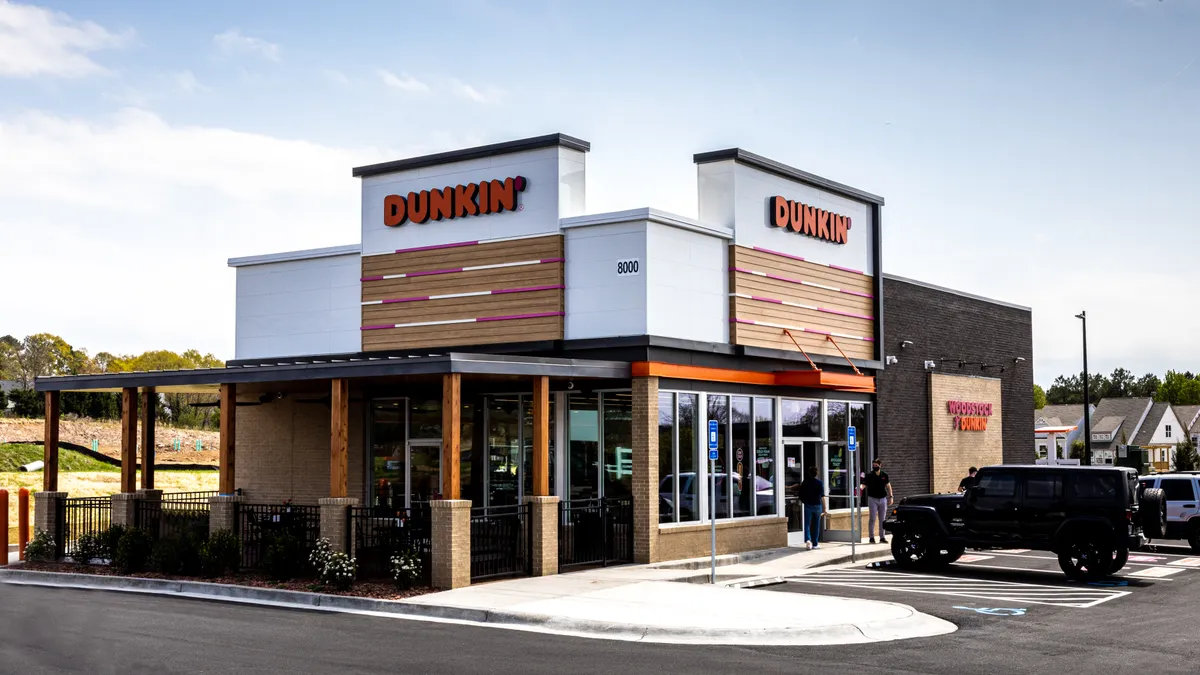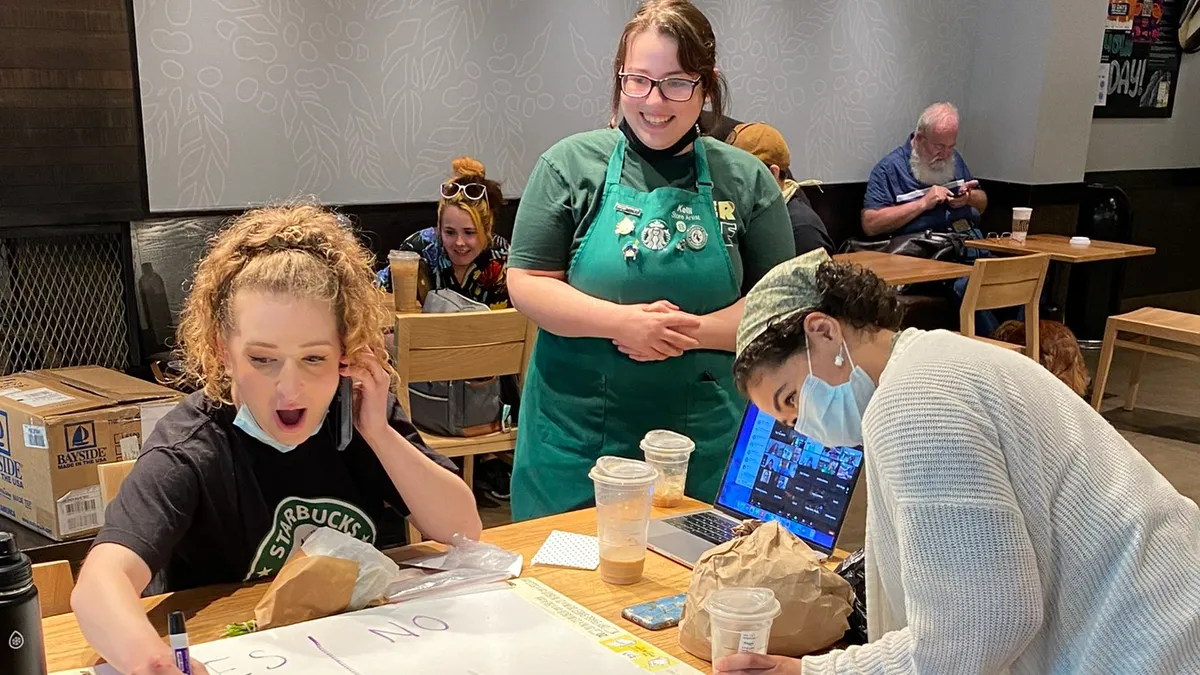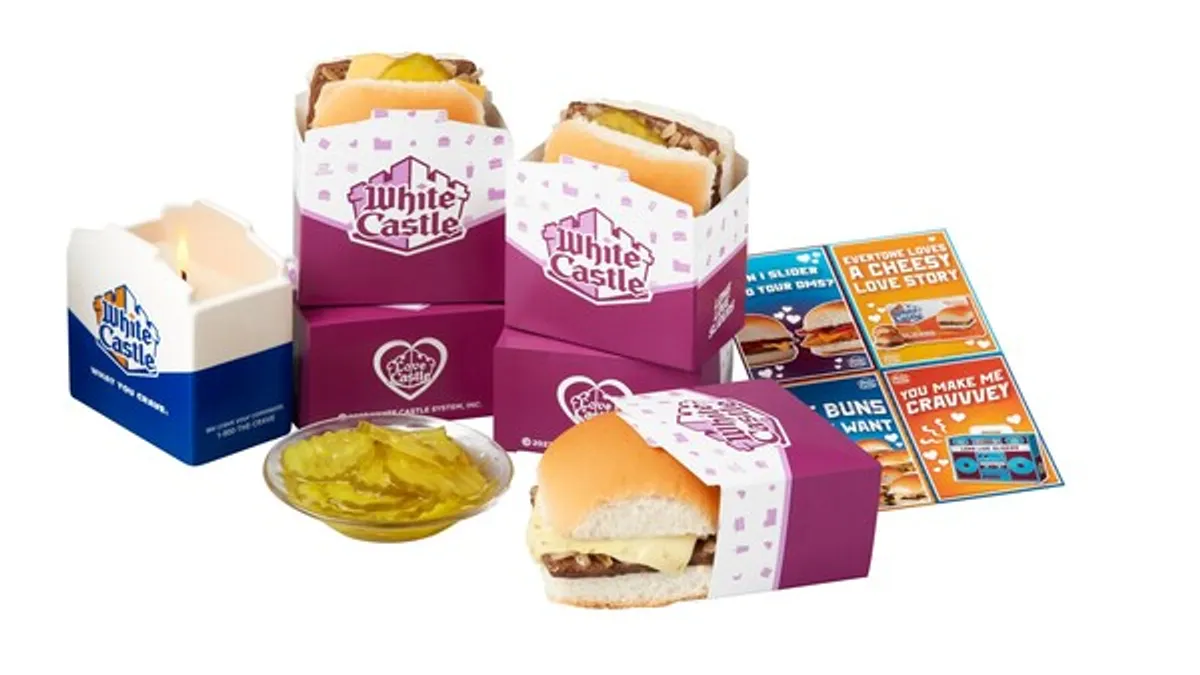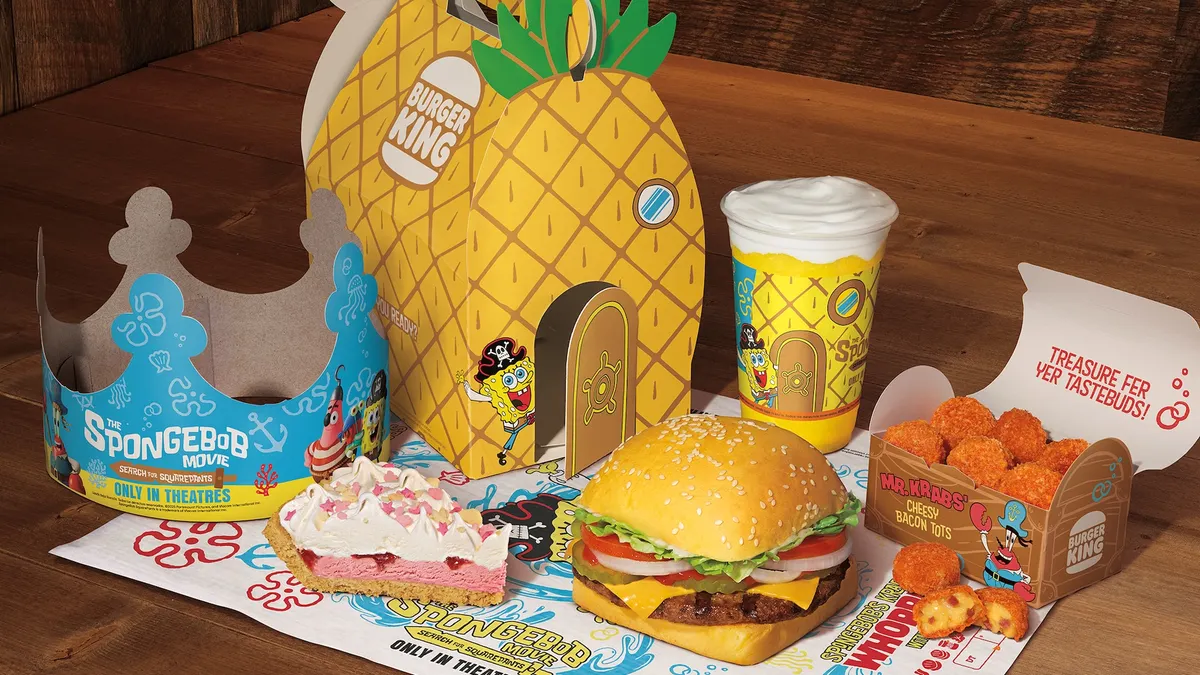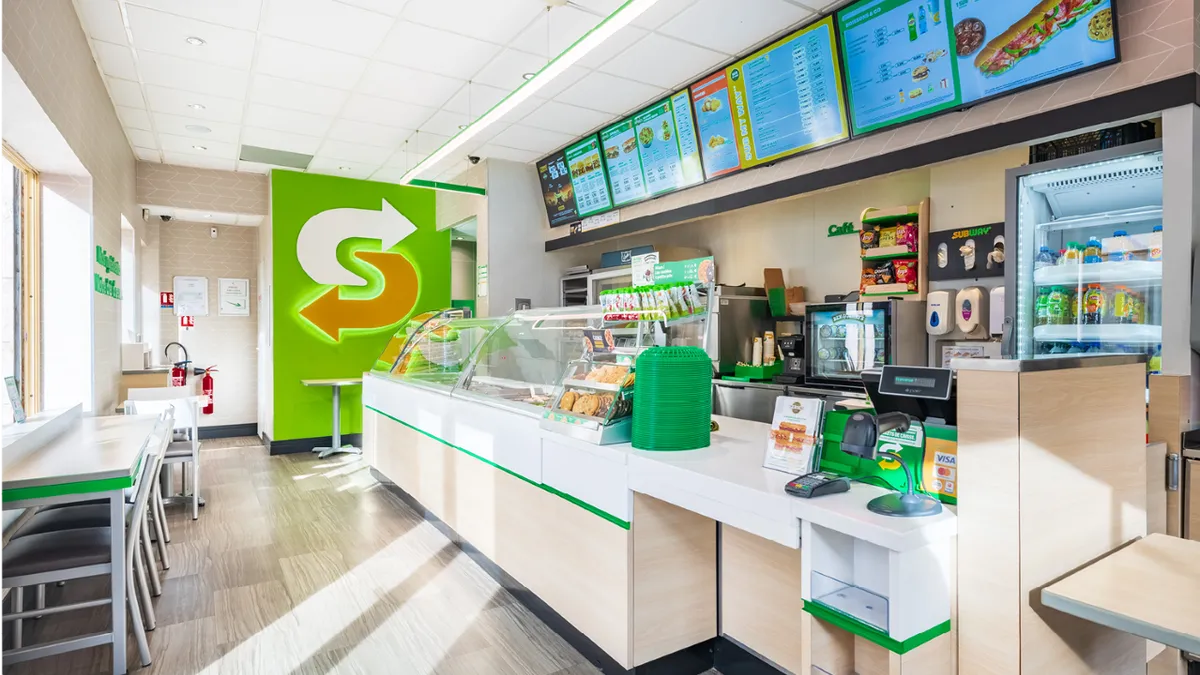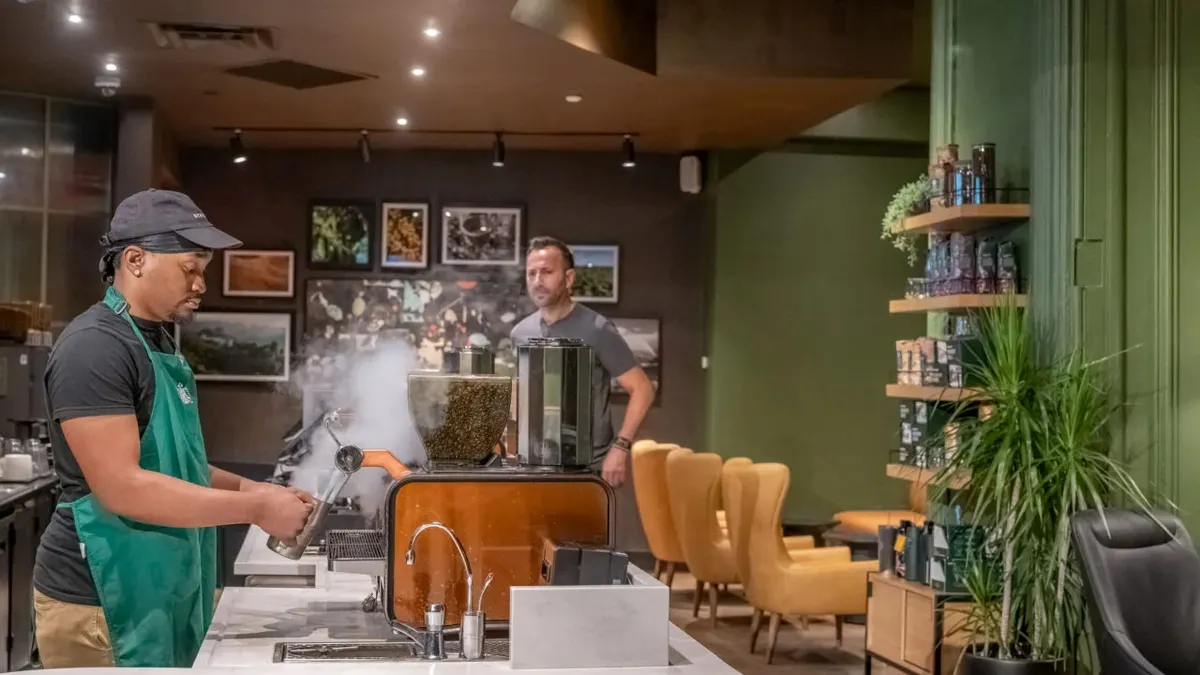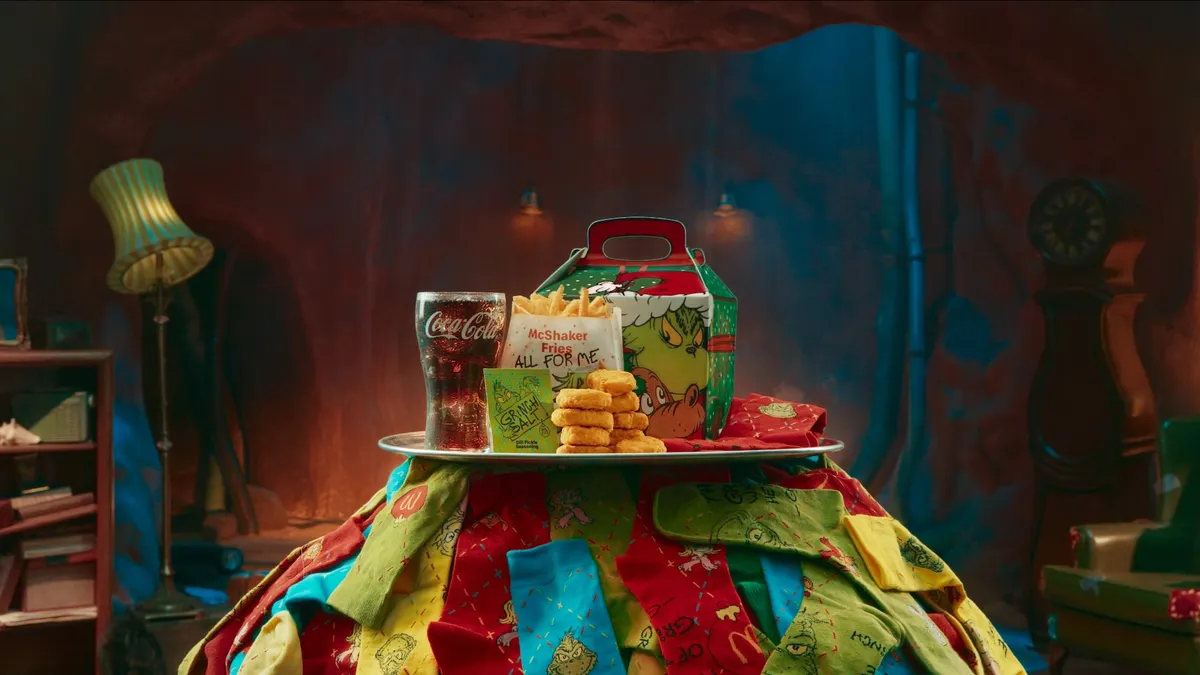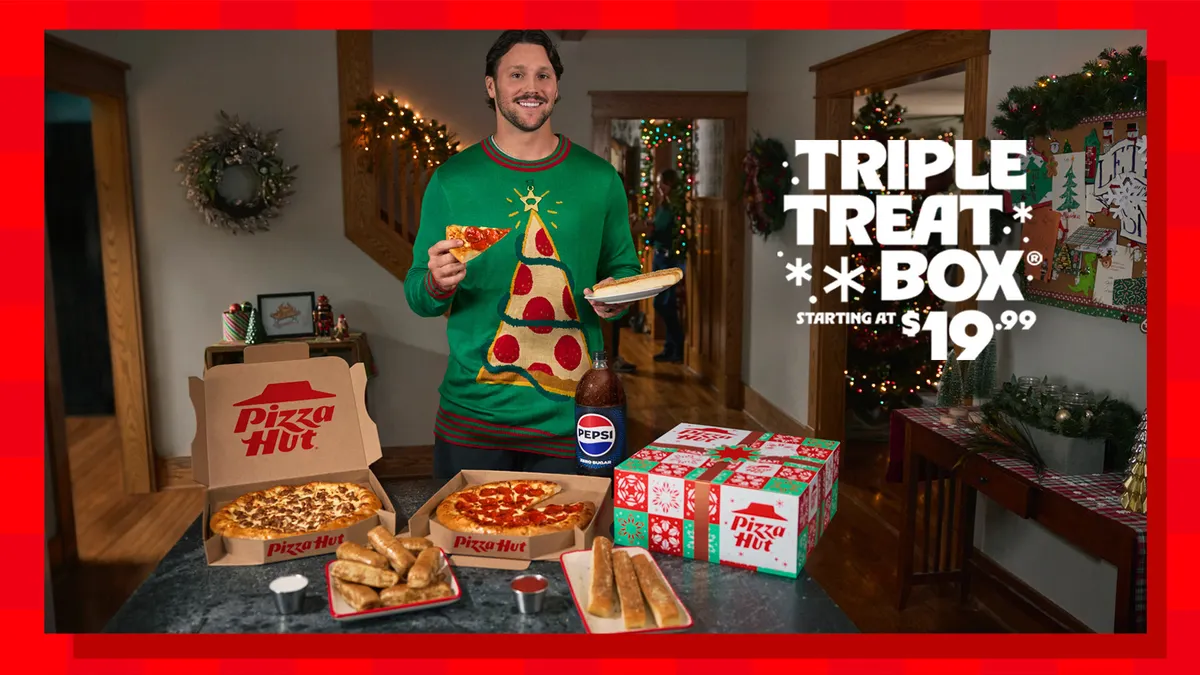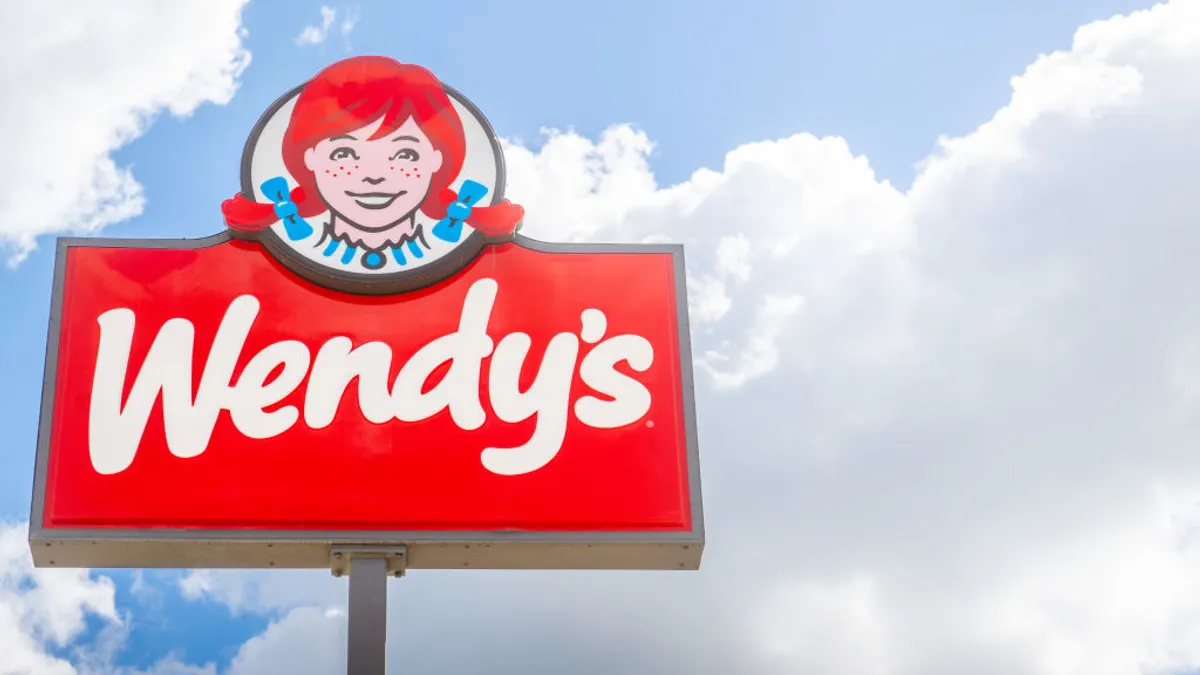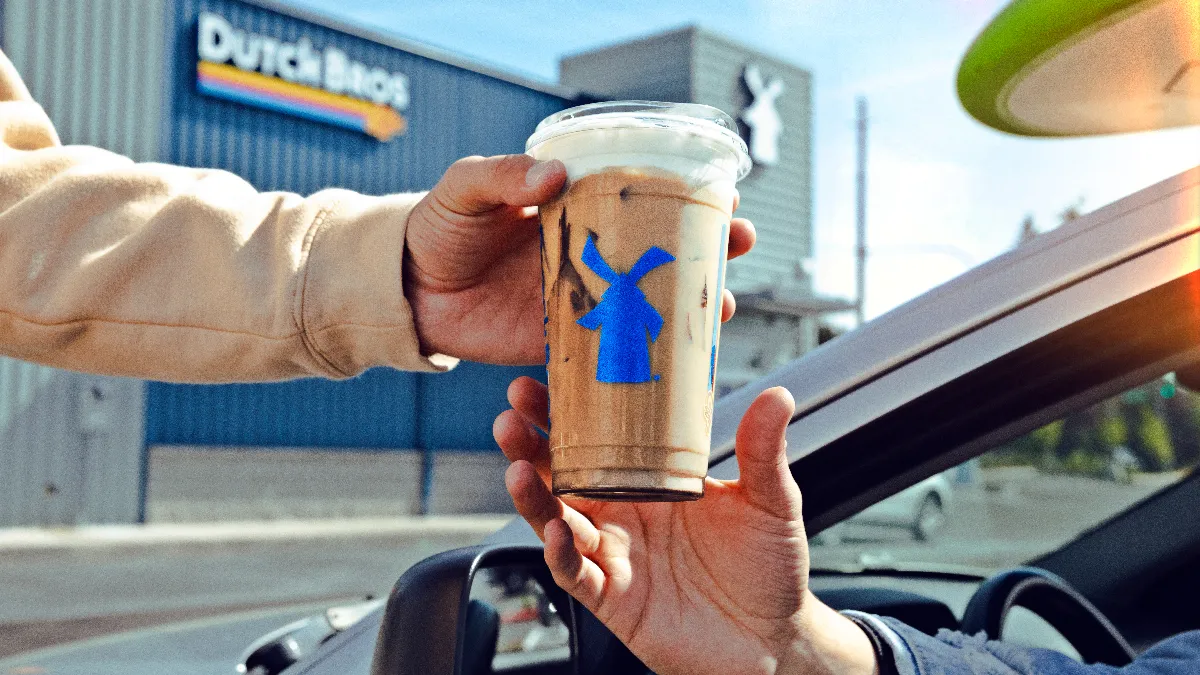Major restaurant brands frequently face stiff competition and low margins, a business reality that is even tougher to navigate during periods of consumer uncertainty. These concerns have been prevalent so far in 2025, as the Trump administration’s fluctuating tariff plans have kept the economy on edge.
Amidst the turmoil, a number of these businesses are leaning on their marketing organizations to buoy sales, including with big-swing creative campaigns, evolving loyalty strategies and investing in digital technology.
“With the rise in uncertainty and the possibility of rising prices because of tariffs, a lot of the chains are shifting the marketing strategy to be focused more on nostalgia or innovation, and moving away from price point,” said R.J. Hottovy, head of analytical research at location analytics platform Placer.ai.
While earnings reports for most quick-service and fast-casual restaurants have shown few bright spots, a recent analysis by Marketing Dive reveals several trends around how marketers are doing their part to maintain positive relationships with consumers.
Bets on culture
QSR leader McDonald’s has been a red-and-yellow canary in the coal mine for the restaurant industry’s struggles, with U.S. same-store sales dropping 3.6% in Q1 2025, a stark contrast from the 12.6% increase notched in Q1 2023 and 2.5% in Q1 2024.
“We entered 2025 knowing that it would be a challenging time for the QSR industry due to macroeconomic uncertainty and pressures weighing on the consumer,” CEO Chris Kempczinski said on McDonald’s most recent earnings call. “We’re not immune to the volatility in the industry or the pressures that our consumers are facing.”
McDonald’s continues to try to put its brand at the center of culture and replicate the success of its Famous Orders platform and activations like the viral Grimace birthday campaign of 2023. The chain this year tapped John Cena to promote its value menu and unveiled a Pokémon Happy Meal, but its biggest win could end up being a partnership with “A Minecraft Movie.” Launched in March, the campaign around the record-breaking video game adaptation was the chain’s largest global campaign yet and rolled out in more than 100 markets.
“We’re encouraged by the consumer response to the ‘Minecraft’ movie campaign and by our overall performance in April, which illustrates the benefit of our value platforms working in conjunction with full-margin promotions and outstanding marketing execution,” Kempczinski said on the Q1 earnings call.
McDonald’s national linear TV ad spend was estimated to be $39.6 million in Q1, up nearly 75% year over year, with an emphasis on savings-focused ads and its partnership with WNBA star Angel Reese, per iSpot data shared with Marketing Dive. The chain saw a 19.5% lift in web traffic driven by linear TV advertising, surpassing other burger brands in a recent study by TV outcomes measurement company EDO. The findings suggest that McDonald’s could see further gains by optimizing its TV ad spend, shifting away from underperforming dayparts like primetime towards the early morning.
“QSR brands are seeing strong consumer response to value meal deal ads during this period of budget tightening, where every dollar — both for consumers and advertisers — must work harder,” said Laura Grover, senior vice president and head of client solutions at EDO, in a statement. “As marketers navigate this uncertain landscape, impression quality becomes the key to driving smarter allocation decisions and ensuring stronger returns within a brand’s existing media footprint.”
Transformation through marketing
While McDonald’s works to hitch its brand to pop culture, Starbucks is trying to reassert its brand identity as part of a turnaround plan that includes significant marketing investments. The cafe chain in Q1 saw U.S. comparable store sales decline 2%, with a 4% decline in comparable transactions partially offset by a 3% increase in average order cost.
Launched around the Super Bowl, “Hello Again” and “Starbucks Monday” generated record-breaking customer engagement and drove the chain’s second-highest Monday gross sales day ever, CEO Brian Niccol said on the company’s most recent earnings call. The percentage of customers ranking Starbucks as their first choice is the highest it's been in two years, and TikTok engagement has increased by nearly three times quarter-over-quarter, the executive said.
“We saw stabilization in our non-Starbucks Rewards member traffic, indicating our broad-based marketing campaign to reintroduce Starbucks to the world is resonating with our customers,” Niccol said. “I think we’re going to continue to just get better from here as it relates to the marketing side of the business.”
Like Starbucks, Papa Johns is also undertaking a transformation strategy that includes amplifying marketing messages as a key priority. To that end, the pizza chain in March launched “Meet the Makers,” the first creative work under CMO Jenna Bromberg, who joined in November. The campaign delivered early positive results, helping to increase customer awareness and consideration among QSRs, according to CEO Todd Penegor. Papa Johns’ North America comparable sales were down 3% year over year in Q1.
Informed by consumer insights, the chain plans to evolve the campaign to focus on its use of simple, fresh ingredients. Papa Johns has also relied on incremental media investments to both reinforce the brand and improve transactions.
“As we amplify our marketing message, we are investing to win share of voice at both the national and regional levels, drive transactions, support continued testing of value propositions, and increase our agility,” Penegor said on the earnings call.
Evolving loyalty
Across the restaurant landscape, marketers are working to fine-tune and evolve their loyalty platforms and rewards programs to better meet the needs of cost-conscious consumers. McDonald’s continues to see strong systemwide sales from loyalty members, notching $31 billion for the trailing 12-month period as it looks to secure $45 billion a year by 2027 in this area. While the loyalty sales are encouraging, McDonald is looking to strike a balance between its everyday value menu and limited-time digital offers.
“Until you get to a point where the usage of the app is the majority of your traffic, relying on that as the primary source of value, it just doesn’t work because you’re not reaching the majority of your consumers,” Kempczinski said on the earnings call. “For that reason, having a broad platform like we have, McValue, that’s available to everybody… it’s an imperative that you have that, which is why we’ve spent the time and energy getting that launched properly.”
Cava — one of the big winners of fast casual chains in Q1 with 10.8% year-over-year growth — has also made its loyalty program a focus. The purveyor of Mediterranean fare saw sales through the program increase 340 basis points as a percentage of total revenue since an October relaunch. Total membership in the program is approaching 8 million members, with more than 50,000 new registrations per week. The results speak to the chain’s new strategy around loyalty.
“The original goal was moving from a more transaction-based ‘spend X, get Y’ to a ‘earn and bank points’ model that would drive greater engagement and participation in the program, and that’s what we’re seeing,” CEO Brett Schulman said on an earnings call. “So, you looked at our lower frequency or mid-tier frequency users, and we lowered the entry reward hurdle, and that has gotten those users more engaged.”
For Cava, bringing guests into its first-party ecosystem increases opportunities for personalization and fosters a test-and-learn environment for engagement. The chain plans to roll out the second phase of its loyalty program, introducing a tiered structure that adds increased benefits and rewards based on visit frequency, per the earnings call.
"The level of insights we have with our guests today plays a big role in informing the executional elements of a loyalty program."

Michael Skipworth
CEO, Wingstop
Like competitor and loyalty innovator Domino’s before it, Papa Johns in November lowered the redemption threshold of Papa Rewards, a change that helped draw about 1 million more loyalty members into the loyalty program in Q1, for a total of more than 37 million. While the change also caused a slight overall decrease in the size of orders, it drove growth among medium- and high-frequency loyalty consumers and caused faster repeat purchases.
As brands with mature loyalty programs tweak their offerings, new entrants continue to emerge. Wingstop will pilot a loyalty program in Q4, with plans for a system-wide launch in 2026. The loyalty program will draw on insights and membership from the 50 million-strong database of its MyWingstop digital ordering platform and offer Gen Z and millennial consumers experiential engagement opportunities.
“We believe our loyalty program will be distinctive in the industry because we’re not taking the typical transactional approach within our design. The level of insights we have with our guests today plays a big role in informing the executional elements of a loyalty program,” CEO Michael Skipworth said on an earnings call.
Investing in digital
Along with the behind-the-scenes work of building loyalty programs and integrating customer relationship management data, restaurant chains are investing in technology to boost their mobile and digital ecosystems. In the app space, Starbucks will update its offering to allow scheduling of mobile order pickup and improved price transparency. Chipotle continues to work to reduce friction in its app and Wendy’s in Q1 added gamification to encourage customers to engage with the brand beyond purchases.
Artificial intelligence (AI) remains the buzziest tech in marketing, in restaurants and beyond. Papa Johns last month partnered with Google Cloud to leverage AI to enhance personalization and its ordering and delivery experience.
“It’s largely been generative AI, to this point, to help out firms fine-tune their message to consumers, but we’re starting to see other things behind the scenes — other AI platforms — to get better insights for their customers and use that for one-to-one engagement,” said Placer.ai’s Hottovy.
"These advancements are driving smarter targeting, increased efficiency and stronger returns on our digital marketing investments."

Chris Turner
CFO, Yum Brands
Yum Brands, the parent company of Taco Bell, KFC and Pizza Hut, has teamed with Nvidia to accelerate its deployment of AI. The company in February revealed a suite of proprietary software-as-a-service tools called Byte by Yum that integrates a variety of tech offerings for thousands of restaurants. The suite’s solutions are already yielding results, helping Taco Bell push the bounds of its ad creative and use personalization to generate additional sales. Digital sales across the entire Yum portfolio increased 12% YoY in Q1, growth executives credited to the company’s investment in tech. Overall, Yum’s worldwide system sales grew 5%, driven in part by Taco Bell U.S. system sales growth of 11%.
“Our U.S. brands are harnessing our powerful data engine and first-of-its-kind cross-brand consumer data platform to deliver personalized marketing campaigns,” Yum CFO Chris Turner said on an earnings call. “Since the end of last year, we’ve expanded AI-driven marketing use cases across our brands, further embedding intelligence into how we engage and convert consumers. These advancements are driving smarter targeting, increased efficiency and stronger returns on our digital marketing investments.”






